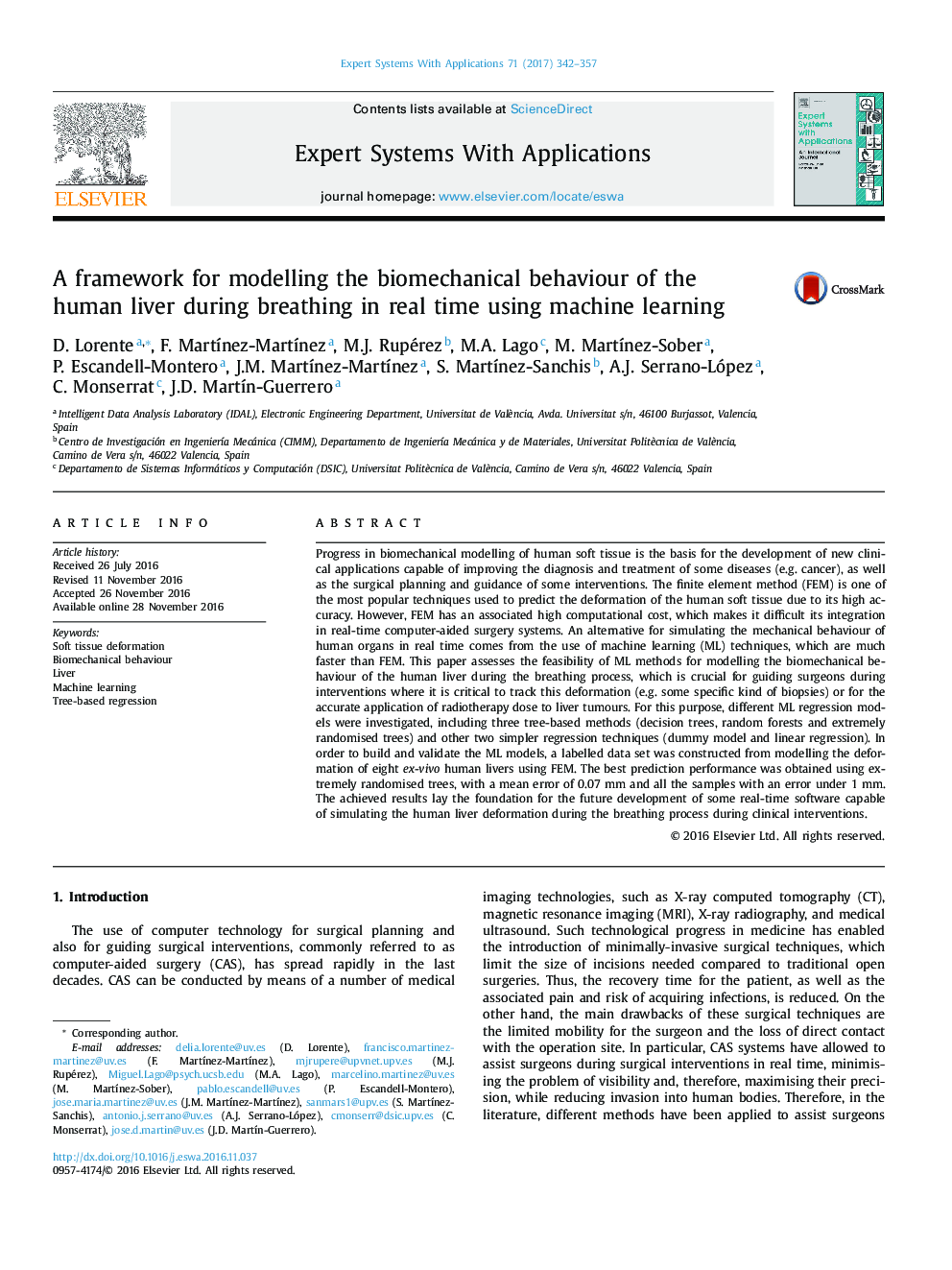| کد مقاله | کد نشریه | سال انتشار | مقاله انگلیسی | نسخه تمام متن |
|---|---|---|---|---|
| 4943546 | 1437635 | 2017 | 16 صفحه PDF | دانلود رایگان |
عنوان انگلیسی مقاله ISI
A framework for modelling the biomechanical behaviour of the human liver during breathing in real time using machine learning
ترجمه فارسی عنوان
چارچوبی برای مدل سازی رفتار بیومکانیکی کبد انسان در طول تنفس در زمان واقعی با استفاده از یادگیری ماشین
دانلود مقاله + سفارش ترجمه
دانلود مقاله ISI انگلیسی
رایگان برای ایرانیان
کلمات کلیدی
تغییر شکل بافت نرم، رفتار بیومکانیک، کبد، فراگیری ماشین، رگرسیون مبتنی بر درخت،
موضوعات مرتبط
مهندسی و علوم پایه
مهندسی کامپیوتر
هوش مصنوعی
چکیده انگلیسی
Progress in biomechanical modelling of human soft tissue is the basis for the development of new clinical applications capable of improving the diagnosis and treatment of some diseases (e.g. cancer), as well as the surgical planning and guidance of some interventions. The finite element method (FEM) is one of the most popular techniques used to predict the deformation of the human soft tissue due to its high accuracy. However, FEM has an associated high computational cost, which makes it difficult its integration in real-time computer-aided surgery systems. An alternative for simulating the mechanical behaviour of human organs in real time comes from the use of machine learning (ML) techniques, which are much faster than FEM. This paper assesses the feasibility of ML methods for modelling the biomechanical behaviour of the human liver during the breathing process, which is crucial for guiding surgeons during interventions where it is critical to track this deformation (e.g. some specific kind of biopsies) or for the accurate application of radiotherapy dose to liver tumours. For this purpose, different ML regression models were investigated, including three tree-based methods (decision trees, random forests and extremely randomised trees) and other two simpler regression techniques (dummy model and linear regression). In order to build and validate the ML models, a labelled data set was constructed from modelling the deformation of eight ex-vivo human livers using FEM. The best prediction performance was obtained using extremely randomised trees, with a mean error of 0.07Â mm and all the samples with an error under 1Â mm. The achieved results lay the foundation for the future development of some real-time software capable of simulating the human liver deformation during the breathing process during clinical interventions.
ناشر
Database: Elsevier - ScienceDirect (ساینس دایرکت)
Journal: Expert Systems with Applications - Volume 71, 1 April 2017, Pages 342-357
Journal: Expert Systems with Applications - Volume 71, 1 April 2017, Pages 342-357
نویسندگان
D. Lorente, F. MartÃnez-MartÃnez, M.J. Rupérez, M.A. Lago, M. MartÃnez-Sober, P. Escandell-Montero, J.M. MartÃnez-MartÃnez, S. MartÃnez-Sanchis, A.J. Serrano-López, C. Monserrat, J.D. MartÃn-Guerrero,
